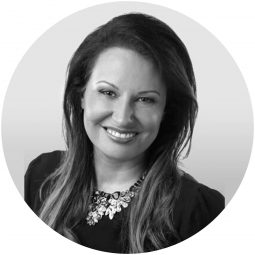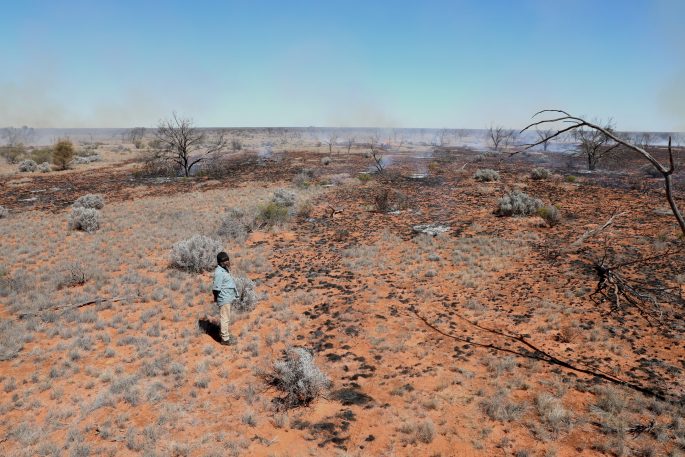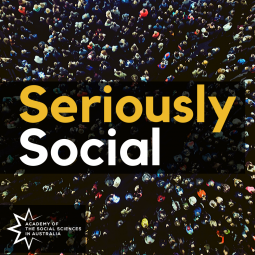 Indigenous academic and filmmaker Larissa Behrendt is a Eualeyai and Kamillaroi woman from North-West New South Wales. Her new moving documentary Maralinga Tjarutja recently premiered on the ABC ahead of National Reconciliation Week (May 27 – June 3) and Larissa joins Seriously Social podcast for E7: ‘Indigenous Might VS COVID-19’. In this episode, she looks at how COVID-19 has highlighted the ongoing inequalities between indigenous and non-indigenous Australians.
Indigenous academic and filmmaker Larissa Behrendt is a Eualeyai and Kamillaroi woman from North-West New South Wales. Her new moving documentary Maralinga Tjarutja recently premiered on the ABC ahead of National Reconciliation Week (May 27 – June 3) and Larissa joins Seriously Social podcast for E7: ‘Indigenous Might VS COVID-19’. In this episode, she looks at how COVID-19 has highlighted the ongoing inequalities between indigenous and non-indigenous Australians.
Consider, for example, that when the Government’s public health warnings came out at the start of the pandemic, public health experts equated the risk levels of 50 year old Aboriginal people to that of 70 year old non-indigenous people. It’s a figure that is factual and political, says Larissa.
Read on for our Q&A with Larissa that explores the health gap and other enduring inequalities between indigenous and non-indigenous Australians.
What did the government’s health warning highlight about the gap between indigenous and non-indigenous Australians?
As somebody who is on that cusp of 50, it was a a wake-up call to see the stark and disproportionate health status of Aboriginal and Torres Strait Islander people compared to the rest of Australia. In a way, it wasn’t surprising, because we do know that there is a significant gap, but I think it is an opportunity to see it in such stark relief that people 50 years and over, which for many people does sound quite young, are being equated with 70 year-olds. It starts to give you a sense of the realities of what that gap means in practice.
This disparity is shocking. Did it come as a surprise to Indigenous communities?
Our community controlled health organisations within the Aboriginal community have been incredibly aware of the gap and have been operating knowing that. The reality is that a large amount of Indigenous people have high instances of respiratory disease, heart disease and liver disease – a whole range of conditions that could be underlying factors that make them much more susceptible to the impacts of COVID.
How has COVID-19 impacted indigenous communities?
I have been looking at the various angles to this on my Speaking Out programme on Radio National. It is primarily the Aboriginal Community Controlled Health Organisations, particularly the Aboriginal Medical Services, that are doing the ground work. That work is quite diverse across the country because our communities are diverse. Within our remote communities, there’s been a very quick and swift response because people understand how vulnerable those communities are in terms of their health needs, and they will not have a lot of health support.
There are Aboriginal health workers and health workers working in those Aboriginal community organisations who do amazing work with the resources they have. They were very quick to try and make sure they had medical supplies and food. We haven’t seen any communities that have had issues with the virus yet, but people are very diligent about that. What we have seen is concern around food security, which was, I would emphasise, a huge issue before Coronavirus, too.
In what ways has public health messaging around COVID-19, such as social distancing, excluded Aboriginal people?
It’s quite usual to have overcrowding in Aboriginal communities, both because of the cultural responsibilities to extended family, but also because of poverty. It is actually a universal issue around that.
One of the problems for mainstream health messages is, it’s all very well to tell Aboriginal and Torres Islander people to go to a doctor and get these kind of vaccinations, that doesn’t often appreciate the fact that access to doctors is not easy for all Aboriginal people where they live, but more importantly, there is a really historical exclusion of Aboriginal people from mainstream medical services, and continuing, continuing discrimination in the provision of medical services to Aboriginal people within the mainstream health services.
In what ways were indigenous health professionals ahead of the game when it came to preventing the spread of Coronavirus in their communities?
They are the things that prevent Aboriginal people from attending mainstream health services during a crisis time, and means that they will attend an Aboriginal clinic. They will attend somewhere where there is an Aboriginal nurse. They will attend an Aboriginal medical service. So those services start to play a really important role. I have to say the community has been very proactive in that. I’ve even felt like I’ve had to go and get those shots because of how strong that messaging is. When the aunties tell you to go and get your vaccinations, you don’t argue with them, so off I went.
That’s why there needs to be a really strong recognition of the importance of the Community Controlled Aboriginal Health Services, because they have immediately understood where mainstream health messaging was not really appropriate for Aboriginal communities, and the answers being put forward weren’t the right messages for Aboriginal communities.

Maralinga, SA
Your new documentary ‘Maralinga Tjarutja’ looks at the 1950s testing of British atomic bombs in South Australia, where the threat to Aboriginal communities was not COVID, but colonisation. Why is this story so important so tell?
The documentary is the story of the Aboriginal communities that were living on the land where the Maralinga bombing took place, and it tells the story from their perspective. This was a documentary that was really driven by the community. The film reflects the story in their terms. Why it’s important to frame it that way is that while we know about the atomic testing, this devastation of their lands through nuclear testing was just one of three tragedies that befell the community.
The community would say their first disaster was the coming of the railway, that first wave of colonisation that saw the introduction of white men, alcohol and sexual abuse of Aboriginal women, then the removal of half-caste children.
The second disaster was the closing of the mission at Ooldea, a significant site at the edge of the Nullarbor Desert where the water never failed. No matter how hard and harsh the droughts were over that 60-plus thousand years that Aboriginal people had been living in that area, they could always rely on the water at Ooldea. It was a very important place also culturally, socially and spiritually. When the railway came, it took 20 years for them to destroy that water source, and so Aboriginal people had to move from that site. And then because the testing was taking place at Maralinga, they couldn’t move back onto their lands up to the north and were forcibly removed down south to Yalata.
How different is the story of what happened at Maralinga when told through the eyes of the local Aboriginal people?
The part of the story that they wanted to tell was that the testing was one part of the aggressive colonisation that they suffered. Also what was really important to their story was that they then fought for 35 years to get their land back, to get the contaminated land cleaned or at least closed off, that authorities who had been responsible for the contamination of that land were held responsible.
It’s really a story of resilience and strength, that this is a community that is strong and proud.
 Tune into Larissa’s conversation with Seriously Social podcast host Ginger Gorman at seriouslysocialpodcast.org.au or on your favourite podcast platform.
Tune into Larissa’s conversation with Seriously Social podcast host Ginger Gorman at seriouslysocialpodcast.org.au or on your favourite podcast platform.